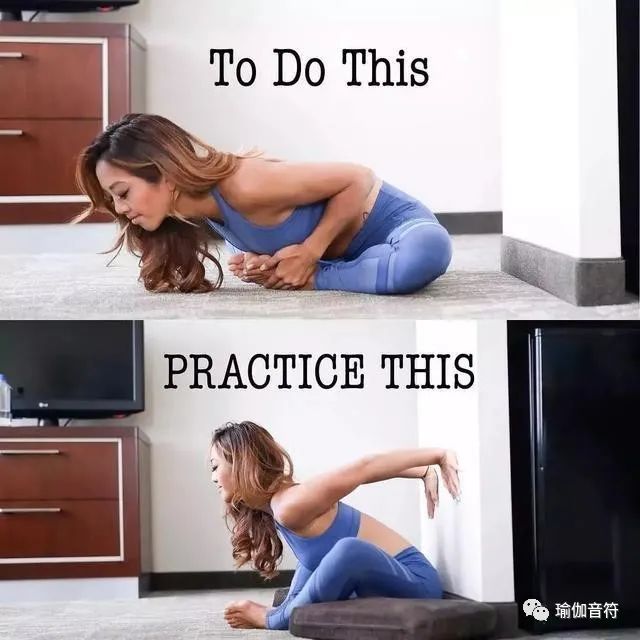As we all know, the application of AIDS is a major feature of Iyengar yoga.

It is said that it is related to the weakness and sickness of master Iyengar when he was young.

He can’t do many postures, so he borrows all the available things around him to help him practice.

For example, the benches, chairs, steps and, of course, walls at home.

Later, they began to make some AIDS according to their needs to help gamma people enter the asana more deeply in practice and keep it more comfortable and safe in the asana.

Finally, it became a major feature.

I have read a book written by master Ann eyengar, which introduces various assistive devices, many of which I have never seen or recognized.

Please click to enter the picture description (up to 18 words) today to chat with you about the wall in yoga assistance.

The wall is available in every family and every classroom.

Although it is a tool, it doesn’t need to be carried around.

It can be seen everywhere.

Learning to make full use of the wall correctly can make our practice more interesting, accurate and safe.

1.

Inverted class.

Provide confidence and security.

When it comes to walls, the handstand class may be used most in your practice.
The main reason is that many people can’t do handstands without leaving the wall, or dare not do handstands.
The wall is not only used as an aid, but also gives us confidence and sense of security.
For beginners, you can try to choose the angle between the two walls when handstands.
Although the pose in the figure below is a tree pose, what I want to say is that it is safer to do handstand at such an included angle of the wall, and it is easier to find the right position of the body.
2.
In the forward bending category, you may use less forward bending internal asana in the actual practice process.
In fact, the wall is also very helpful to forward bending.
The following figure suggests that beginners use the method in the small figure on the left.
Your feet can be a little farther away from the wall, and your hips touch the wall.
The help shown in the figure below can help your sciatic bone rise, stabilize the upward trend of your sciatic bone, prevent him from falling down, and make your back easier to relax.
This is a standing forward bending sitting position, which is also OK.
Push your hands back against the wall to help extend your spine forward and push your hips back; Press the heel against the wall like the red line drawn in the figure below.
2.
Bend back.
There are more back curved walls.
The thighs, hips and lower abdomen against the wall can fully focus on the extension of the chest without worrying about the push forward of the hips or the premature participation of the lumbar segment in the retroflexion.
There is another method to assist back bending, as shown in Figure 4.
Side bending.
For the side bending class, I think the wall is simply an artifact.
It is the best accessory, not one of them.
The requirement of the side bend type in the figure below is that the body is in a plane, such as triangle type and side angle type.
The wall itself is a plane.
Just lean the body against the wall, which is so capricious.
4.
Torsion class.
I believe that there may be less use of twisting postures.
Let’s take a look at the following figure, which you may think of and have used.
Look at the figure below, with the help of the torsion of the wall.
5.
Balance class.
Are there any more stable AIDS than walls? In the figure below, it doesn’t matter if you step on your feet or pedal.
6.
Shoulder opening and hip opening are also used a lot.
I won’t list the number of ways one by one, at least in double digits.
The methods I cited can only be said to attract jade, mobilize everyone’s enthusiasm and creativity, and find out your own auxiliary methods and angles.
At the same time, using replication does not mean that we are weak, but that we are full of wisdom and good at borrowing.
The ultimate goal of using assistive devices is to complete asana independently of assistive devices…

